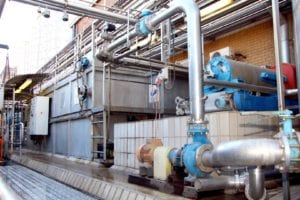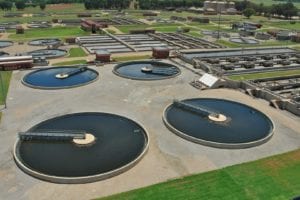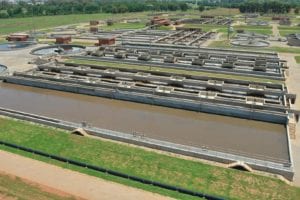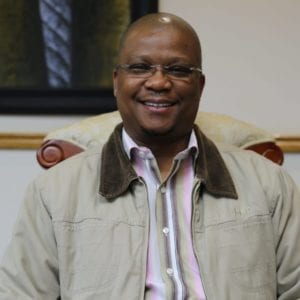IMIESA speaks to Tumelo Gopane, managing director, East Rand Water Care Company (ERWAT), about the company’s future strategy and its pivotal role in changing the landscape of wastewater treatment in South Africa.
Home to more than 3.5 million residents, the City of Ekurhuleni is Gauteng’s third largest metro and a strategically important one, with its economy largely driven by agriculture, manufacturing and mining. Ekurhuleni’s approved Aerotropolis Master Plan is also strategically important, driving the vision of becoming an Aerotropolis City. Within this framework, ERWAT is vital to the city’s function, currently operating 19 wastewater care works and employing some of the most experienced engineers, scientists and technicians in this complex field. ERWAT permanently runs plants that release between 800 MLD to 1 000 MLD, depending on the season. “ERWAT is a recognised leader and our wish is to collaborate with all stakeholders in order to share the knowledge we’ve gained over the years in addressing the roll-out of wastewater infrastructure, operations and maintenance, and new construction,” Gopane explains. “Some three years ago, for example, ERWAT conducted an assessment on all of Limpopo’s wastewater treatment plants at the request of the Limpopo Department of Cooperative Governance and Traditional Affairs (CoGTA).” Currently, a fair number of wastewater plants in South Africa are not performing as well as they should. Where discharged effluent is not meeting ideal standards, this has a knock-on effect, increasing the cost of downstream water purification. “We’re here to collaborate in addressing the situation, as well as highlight and emphasise the nationwide backlog on sanitation, which is frequently one of the more neglected areas in the infrastructure mix, as the focus is largely on potable drinking water.” City Managers Forum
City Managers Forum
A positive step in this direction is the reestablishment of the City Water Managers Forum, an initiative led by the South African Local Government Association (Salga) and the Department of Water and Sanitation (DWS). Hosted in Cape Town during March 2018, the forum was attended by water and sanitation department HODs from across the eight metros, in addition to ERWAT and Johannesburg Water, and provided a great platform for engagement.
“Everyone who extracts from a natural water source, like a river, pays a levy of around R1 per kiloliter to the DWS, which is then allocated for dam maintenance and construction,” he continues. “If this money and other infrastructure grants can be pooled, a far more integrated approach could be achieved by infrastructure planning executives. By developing heat maps for the country, we will then clearly define priority areas. We plan to discuss this further at the next meeting, where we will formulate action plans and timelines.
“We’d also welcome the participation of the Trans Caledon Tunnel Authority, since its involvement in financing and implementing mega bulk water schemes – like the first two phases of the Lesotho Highlands Water Project – is an essential part of the process in ensuring that metros and other municipalities have the necessary dams and future storage requirements to meet urban expansion and mitigate the drought situation.”
At a higher level, the premier of Gauteng plans to set up a ‘water war room’, where ERWAT, along with other key stakeholders, will participate.
“We’ve also been in discussions with the Municipal Infrastructure Support Agent, and have stated that ERWAT is available to collaborate with the implementation of CoGTA’s Local Government Turnaround Strategy on water and wastewater,” he explains.
Urbanisation and sanitation
In an ideal world, planning and infrastructure roll-outs should be in advance of forecasted trends, but the rate of urbanisation in South Africa, like most of the world, is unprecedented. Ekurhuleni has over 100 informal settlements, and the number is set to grow. That puts an enormous strain on existing infrastructure and the city’s human settlements programme. “Building wastewater facilities, pipelines and pump stations for these settlements cannot happen overnight, largely due to financial constraints. Therefore, we’re looking at more realistic alternatives, like package plants, which are far faster and more affordable to deploy than conventional treatment works,” Gopane expands. “Plus they should ideally replace VIP (ventilated improved pit) toilets, which were always intended to be a temporary solution. VIPs cost the city millions to service annually and impact negatively on quality of life.”Package plants also have the advantage of being decentralised, ‘off-the-grid’ solutions that occupy small site footprints, making them well suited for installation within a congested township setting. Gopane also argues that a decentralised, package plant approach should be considered for new developments in general, including industrial zones. “Otherwise, it will be very challenging to raise the capital to address the current backlogs and provide for future requirements,” he states.
Infrastructure assessments
In the past financial year, commencing 1 July 2017, original equipment manufacturers (OEMs) were tasked with conducting infrastructure assessments at all ERWAT plants to evaluate future maintenance and replacement needs on critical equipment and machinery, like pumps, electric motors, transformers and biofilters. Ekurhuleni’s 250-plus pumpstations, maintained by ERWAT, have also been rigorously inspected. This maintenance philosophy of OEMs continuously ascertaining how their equipment is performing over its lifecycle ties in with ERWAT’s decision to appoint Aurecon, which will be responsible for developing an asset management policy strategy. This will include the development of standards and specifications. Gopane says that ERWAT’s asset management approach will be shared with the industry. ERWAT projects
ERWAT projects
Within its own organisation, ERWAT has embarked on various upgrade initiatives, as well as longer-term plans to rationalise its treatment plants down from the current 19 to around 9.
The estimated cost of rationalising the plants is around R7 billion over an envisaged five-year period. This will enable ERWAT’s remaining plants to be upgraded for a further 50-year capacity, based on a forecasted population and industrial growth rate of between 3% to 4% per annum.
Three of the plants – namely Welgedacht, Tsakane, and Hartebeestfontein – are presently being revamped. The project at Welgedacht has been completed, while work at Hartbeesfontein is expected to be finalised within the next four months. Hartebeestfontein is being equipped with Nereda, an advanced, proprietary biological wastewater treatment technology from Royal HaskoningDHV.
In the meantime, Tsakane is currently being commissioned and features the use of Bluewater Bio International’s proprietary Hybacs activated sludge process, supplied and supported locally by Headstream Water. ERWAT reports that the Hybacs ‘plug-and-play’ system is running optimally, using 60% of the electricity for the same quantity of wastewater and a third of the physical footprint.
 PPP opportunities
PPP opportunities
ERWAT is currently researching the best way to attract the necessary funding. “We’re talking to the Development Bank of Southern Africa to see if we can attain loans on the back of grants and operating savings,”he continues. Other approaches being investigated include establishing public-private partnerships (PPPs) based on the build, own, operate and transfer model. For industrial customers, this would include selling reused water. Gopane points out that ERWAT’s Waterval plant, which serves an almost 95% industrial client base, would be well suited for a PPP and could be ring-fenced to guarantee a return on investment. Outside Ekurhuleni, additional funding could potentially also be sourced by assisting other municipalities and by increasing ERWAT’s private sector business where it already manages the wastewater needs of a number of blue-chip FMCG clients. Mining is the next sector being targeted. At the 2018 Investing in African Mining Indaba, ERWAT’s stand attracted a number of positive enquiries from local mining houses, as well as operations in countries like Zambia and the DRC. “Our vision is for ERWAT to become the entity supporting wastewater across South Africa and beyond. We are already doing this in a fragmented manner, but we now plan to coordinate it from a Salga viewpoint to ensure that every citizen has access to world-class sanitation,” Gopane concludes.








